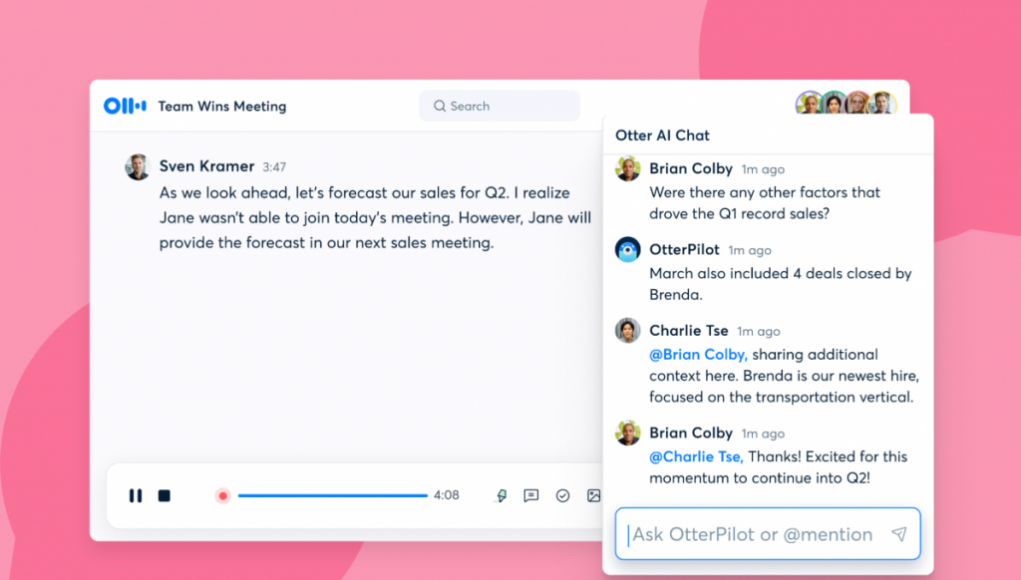Are you tired of missing important details during meetings? Otter AI Chat, a new feature from AI-powered voice transcription provider Otter, has got you covered.
The new Otter AI chat functionality, announced today by the San Francisco startup, gives users the power of generative AI as an integrated component of voice transcription. Otter has been expanding its voice transcription service in recent years, adding integration with popular conferencing technologies including Zoom and support for Microsoft Outlook. In February of this year, the company expanded its OtterPilot AI functionality, bringing new automations to its voice transcription service. The company claims that its AI-powered service transcribes over one million spoken words every minute.
With the new Otter Chat capability, an integrated AI chatbot inside the user console enables users to ask questions about a meeting in progress. You can find out if a certain topic has already been discussed, ask about the sentiment of the meeting or of a specific speaker, and even ask the AI to generate content based on the meeting, such as follow-ups and action items.
It’s an approach inspired by the success of OpenAI’s ChatGPT.
“ChatGPT is such a sensation — it shows that AI can understand human questions and can generate interesting answers,” said Sam Liang, founder and CEO of Otter, in an interview with NeuralNation. “However, ChatGPT is mostly based on public knowledge; for corporate workers, their meetings are internal and … happening in real time.”
Otter has built its own type of LLM for Otter AI Chat
While Otter AI Chat is inspired by ChatGPT, it is not using the OpenAI technology. Rather, Liang emphasized that his team has developed its own purpose-built AI technology to enable the new service.
Liang explained that OpenAI’s ChatGPT is based on a large language model (LLM) trained on public data that consists mostly of written content. ChatGPT provides a conversational interface between the human being and the AI.
Otter AI Chat is taking a somewhat different approach.
“We’re building the largest spoken large language model based on mostly verbal data,” Liang said. “The [spoken] verbal data has a lot of differences compared to written documents.”
With spoken verbal data, there is more interaction and speakers are often less formal and more casual. There is also the ability to better understand and derive sentiment from the tone of a speaker. Otter has been able to train on over a billion meetings the company has transcribed, while keeping all user information confidential.
Otter building a collaborative chat for AI
Liang said that rather than being just a human-to-bot interface, the Otter AI Chat interface enables what he referred to as “collaborative chat,” where all the people in a meeting can collaborate both with each other and the AI chatbot in real time.





















